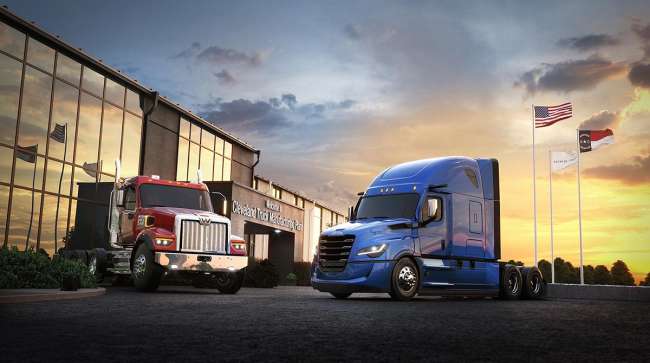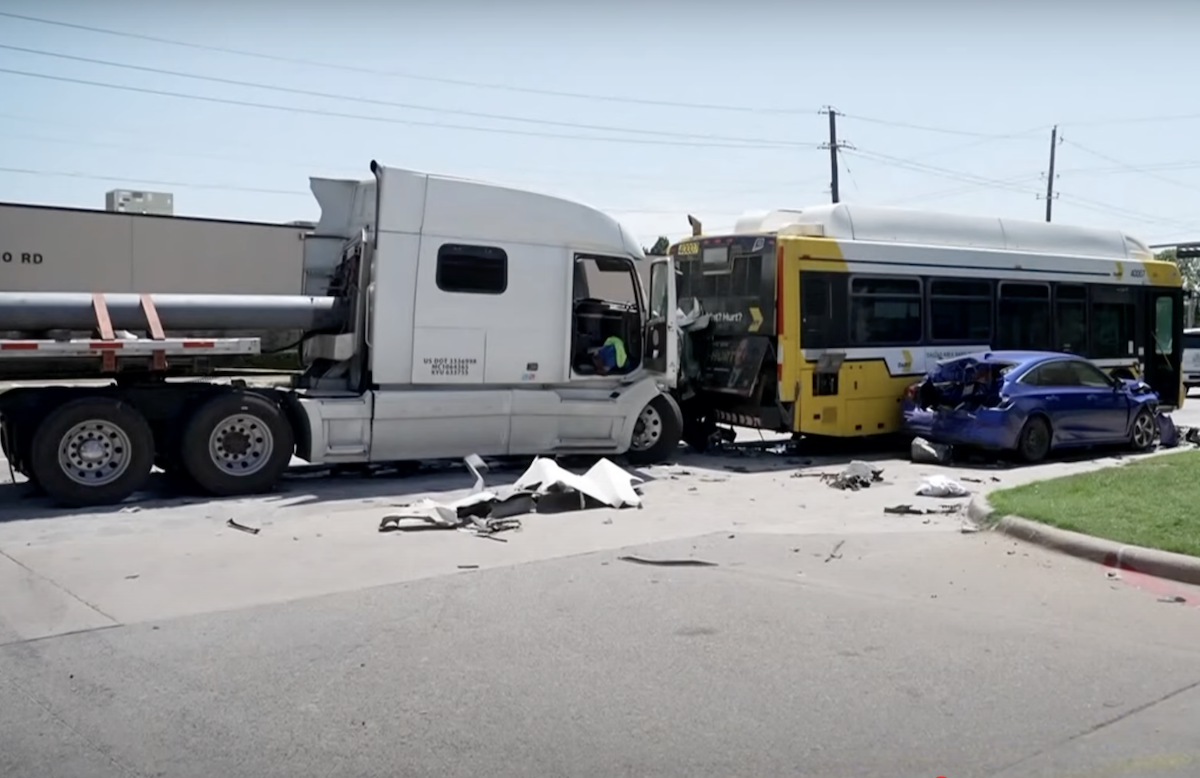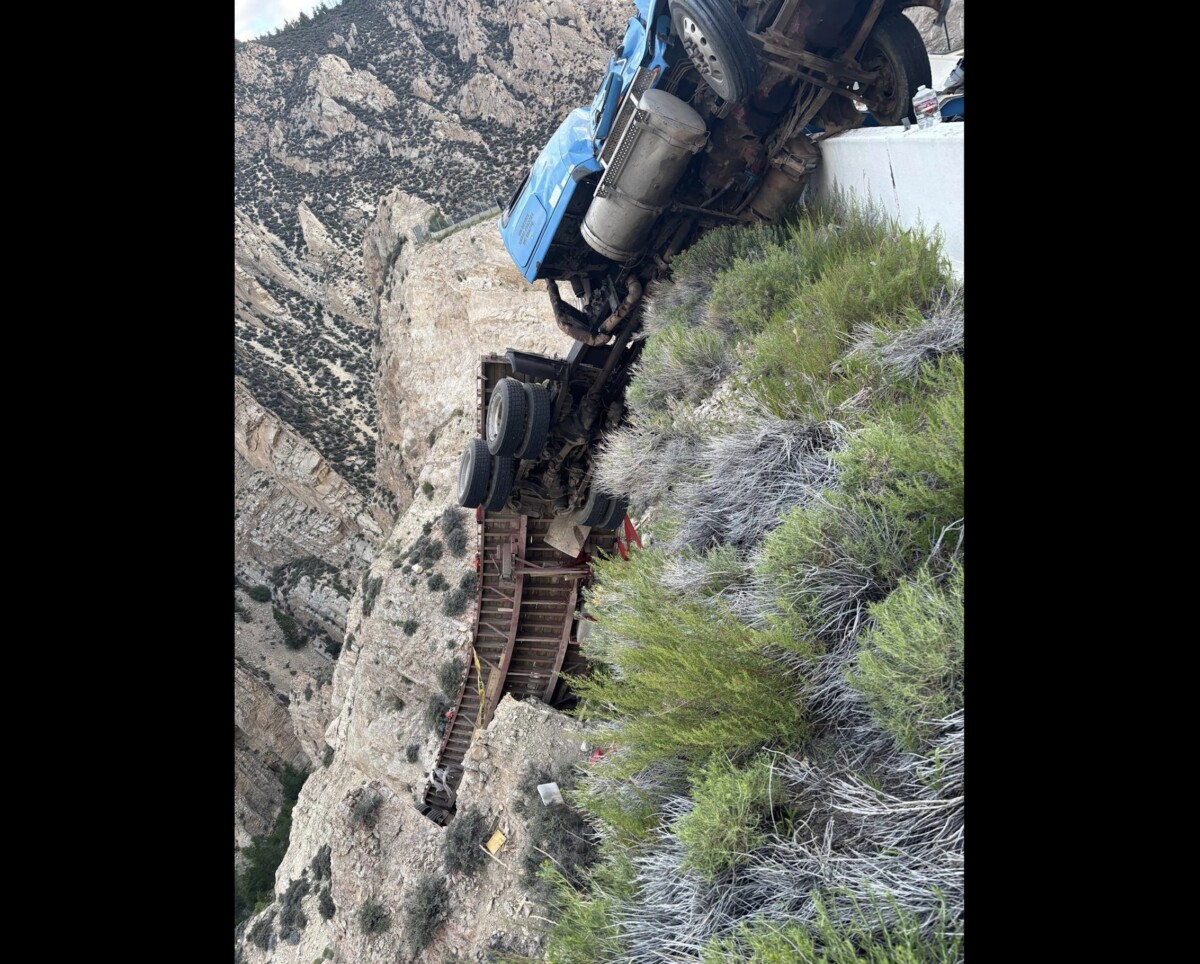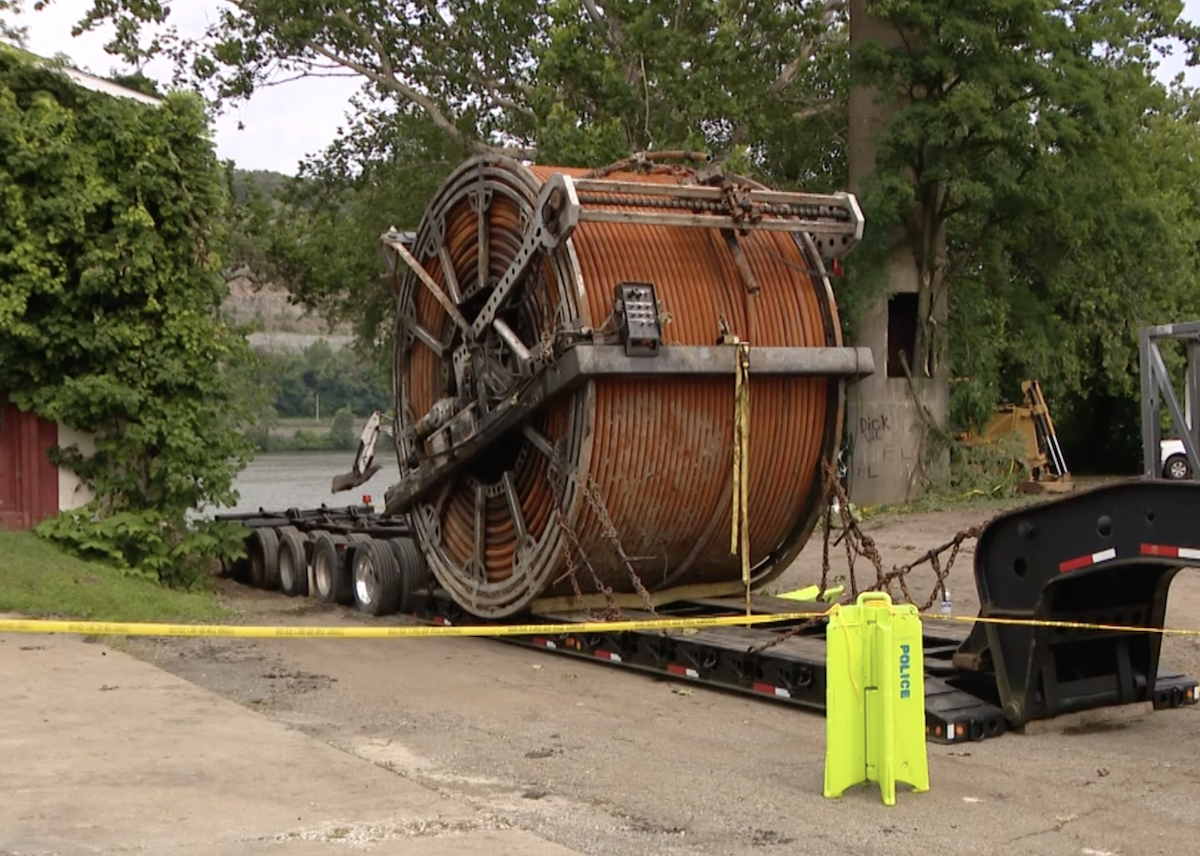DTNA is looking to increase its heavy-duty vocational truck sales 60% by 2030. (Daimler Truck)
CLEVELAND, N.C. — Daimler Truck North America aims to increase its margins in the second half of the 2020s, accentuating a position as the key engine of growth for parent company Daimler Truck.
Driving the margin push will be an ever greater focus on the heavy-duty vocational truck sector through Western Star; increased parts sales; reduced costs; and a decrease in capital expenditure, executives said during Daimler Truck’s Capital Market Day 2025.
The parent company of Freightliner and Western Star’s return on sales in 2024 was 12.9% and in 2025 is expected to be 12%, according to presentations during the event.
By 2030, Daimler Truck expects its North American unit’s margin to be as lofty as 14%, 2 percentage points higher than the ceiling forecast at Capital Market Day in 2023. DTNA’s floor is also higher, rising to 10% from 9%, the executives said.
Margins at DTNA came in at 9.2% and 10.8% in 2021 and 2022, respectively.
Daimler Truck’s ROS in 2022 was 7.7%, 9.9% in 2023 and 8.9% in 2024. The parent company is aiming for an overall ROS of 12% from its truck and bus units by 2030, including the underperforming Mercedes-Benz Trucks and Asian truck units.

“[DTNA] has delivered consistently strong financial performance over the past years, and we’re building on that momentum,” said CEO John O’Leary.
The strategic focus in the coming quarters and years will be on increasing the rate of vocational truck market growth and optimizing the product lineup, Portland, Ore.-based DTNA’s top executive added.
DTNA is looking to increase its heavy-duty vocational truck sales 60% by 2030. The truck and bus maker — which historically focused more on the Class 8 on-highway semi market — is aiming for a heavy-duty vocational truck market share of more than 35% by 2030, a significant jump from its current slice of the pie.
READ MORE: Daimler Targets Expansion in Heavy-Duty Vocational Market
Western Star launched the X Series starting in 2020: the 47X, 49X and 57X.
The brand already upped its share of the market over the first half of the 2020s, O’Leary said, benefiting from a unique set of circumstances.
Competitors had constrained capacity starting in 2023. Western Star was able to “shortcut” some of the traditional paths to success with vocational fleets, which are known for their loyalty to their chosen brand, O’Leary said.
Capital Market Day 2025 | Daimler Truck Holding AG 🚛🚍️
We are proud to host our Capital Market Day 2025 at the Truck Manufacturing Plant in Cleveland, North Carolina, under the theme “Stronger 2030”.
➡️Find all information here: https://t.co/hayjN8wqui pic.twitter.com/s99g8vqJOV
— Daimler Truck (@DaimlerTruck) July 8, 2025
Typically, a truck maker must seed trucks into a fleet gradually, and gaining acceptance takes a long time, he said, adding: “It’s a lot of fundamental blocking and tackling.”
“Picking up a few percentage points a year is pretty good,” he said. “To gain a [percentage] point of market share is not easy.”
As a result of the increase in vocational orders and sales, DTNA completely inverted its model at the Cleveland Truck Plant, said O’Leary, noting supplementary reasons for seeking increased vocational sales include higher aftermarket sales. “[Vocational trucks] are high consumers of parts,” he said.
DTNA also covets a bigger share of the heavy-duty vocational market because there tends to be a higher average selling price due to an elevated level of spec’ed content. Securing a larger share of the customer’s wallet with a broader product range, particularly through aftermarket sales or through trailer part sales, will also boost DTNA margins, O’Leary indicated. The shift is part of a companywide “Service First” program, one of five pillars of Daimler Truck’s “Stronger 2030,” which was unveiled at the CMD.

Radstrom
On July 10, Radstrom will officially open Mercedes-Benz Trucks’ global parts center in Halberstadt, Germany. The facility will serve parts needs in 170 countries, she said.
DTNA aims to capture a greater share of the second life cycle of parts.
“We tend to be very good with first and second customer” through dealerships, O’Leary said, but the company is looking to increase its third and fourth customer share.
The Service First program will have three legs: stand-alone parts stores; direct fulfillment and portfolio expansion.
DTNA is looking to inspire investment in dealers’ parts operations, O’Leary said in a one-on-one sit-down with Transport Topics. Some dealers want to “milk the cow,” he said. DTNA wants dealers to take care of customers like it believes they should be treated.
DTNA cannot cancel a dealer’s franchise because of franchise laws, but it can encourage better, more highly capitalized dealerships to buy underperforming peers and introduce best practices, O’Leary told TT.
While DTNA added revenue from increased Western Star sales, the company also sought to reduce costs in other areas of the enterprise. Further cost cutting is on the way, exacerbating the rise in margins, said O’Leary. DTNA cut costs by 185 million euros post-COVID pandemic.
The company saw potential for downsizing as the on-highway market exited its growth stage. In the middle of 2024, DTNA reduced its white-collar head count by 200 employees, he said. DTNA got lucky, the company’s top executive said, as expectations for a pre-buy had vanished.
To push through the further cost reductions, O’Leary said DTNA plans to return operating efficiency to pre-COVID levels, reduce non-value-added complexity, increase automation and improve efficiency through strategies identified by artificial intelligence.
DTNA is always looking to be leaner, said O’Leary, adding that it was a “constant fine-tuning exercise.”
In a fourth leg of the expected margin expansion, capital expenditure will decrease. Companywide capex will peak in 2026, Daimler Truck said.

All four fifth-generation Freightliner Cascadia configurations that launched last fall. (Daimler Truck North America)
Freightliner launched the fifth-generation Cascadia in October.
It is unclear, however, how these plans will be impacted by the ongoing freight market downturn, exacerbated by the continued market uncertainty due to concerns over the Trump administration’s trade policy — particularly tariffs, plus the cancellation of many major infrastructure projects proposed by the Biden administration.
Daimler Truck CEO Karin Radstrom said the parent company chose Cleveland partly because of the pre-buy expectations, but circumstances changed remarkably in the intervening period.
“[There’s] a lot more doubt about the economy, a lot more doubt about the pre-buy, a lot more doubt about everything,” she said, adding: “Markets are very uncertain and volatile.”
The order environment is “very challenging,” Chief Financial Officer Eva Scherer said, noting DTNA has not seen a pickup in orders as it expected, with targets set at the start of the year becoming ever more distant.
Daimler Truck in May cut its 2025 North American truck sales guidance because of the weak U.S. freight market environment and trade policy uncertainty. The company said marketwide heavy-duty Class 8 sales would be in a range of 260,000 to 290,000 vehicles, compared with previous expectations of 280,000-320,000 trucks.
DTNA is forecast to sell 155,000 to 175,000 trucks in 2025 across all classes, down from 180,000 to 200,000 before the Trump administration introduced a variety of tariffs, and before the reciprocal actions of its peers.






